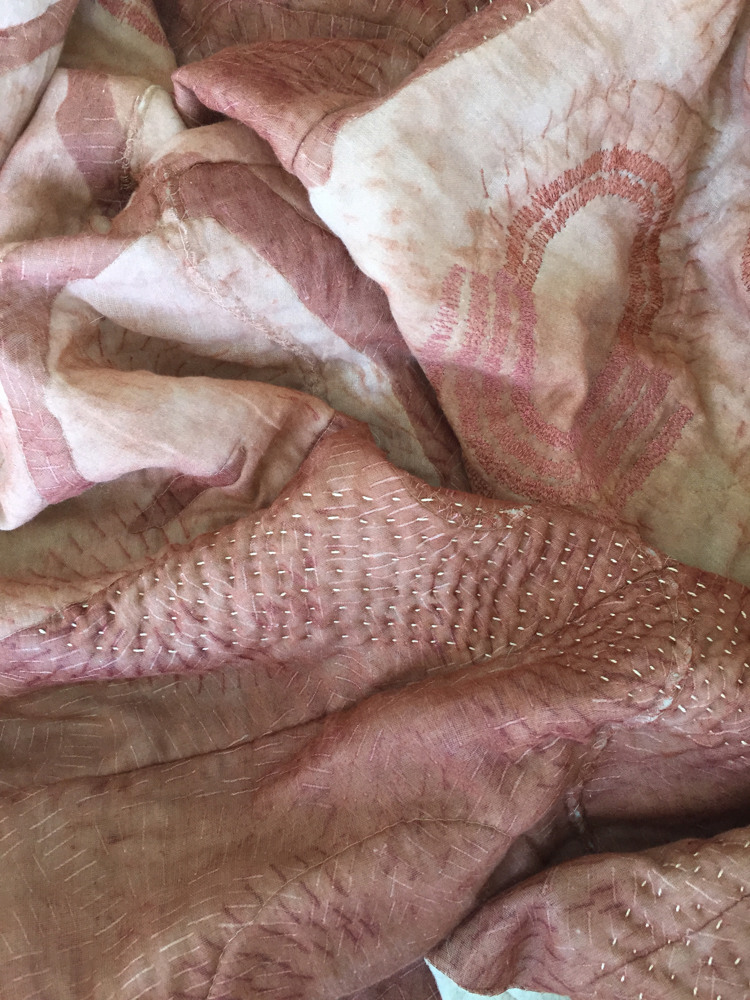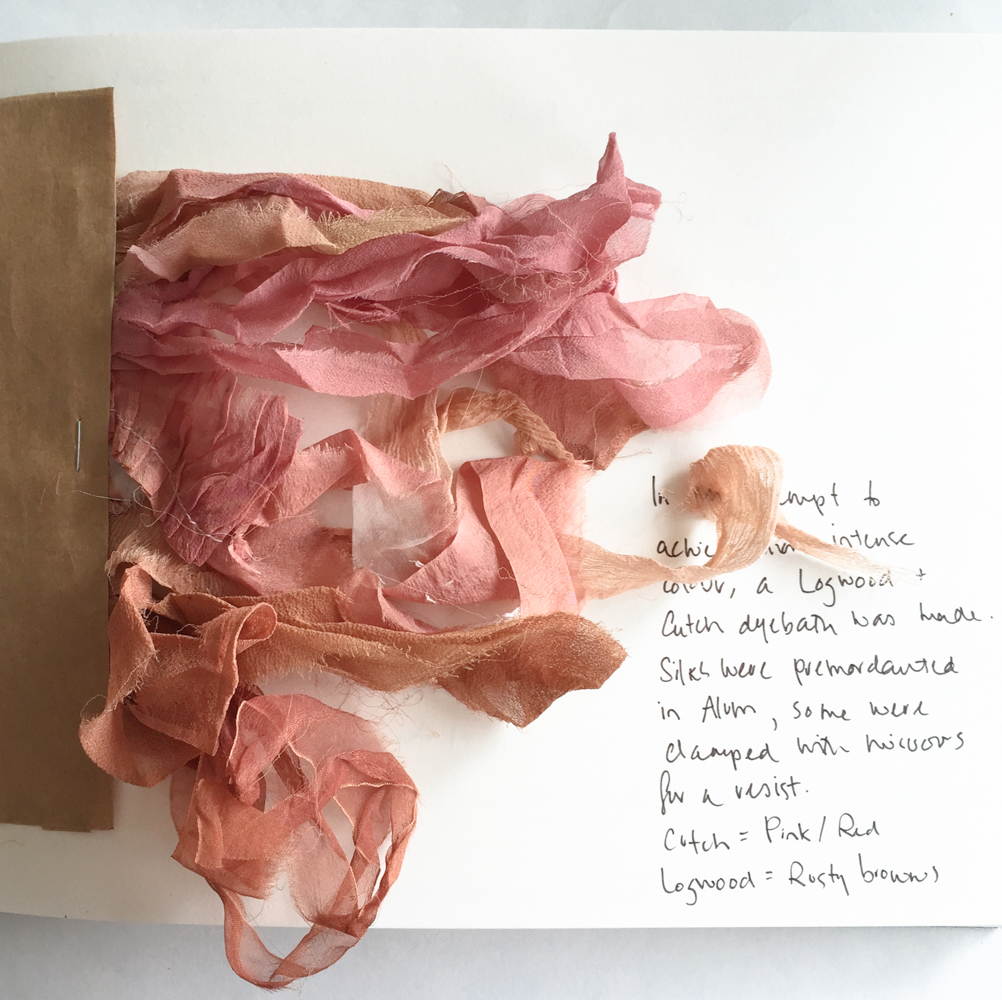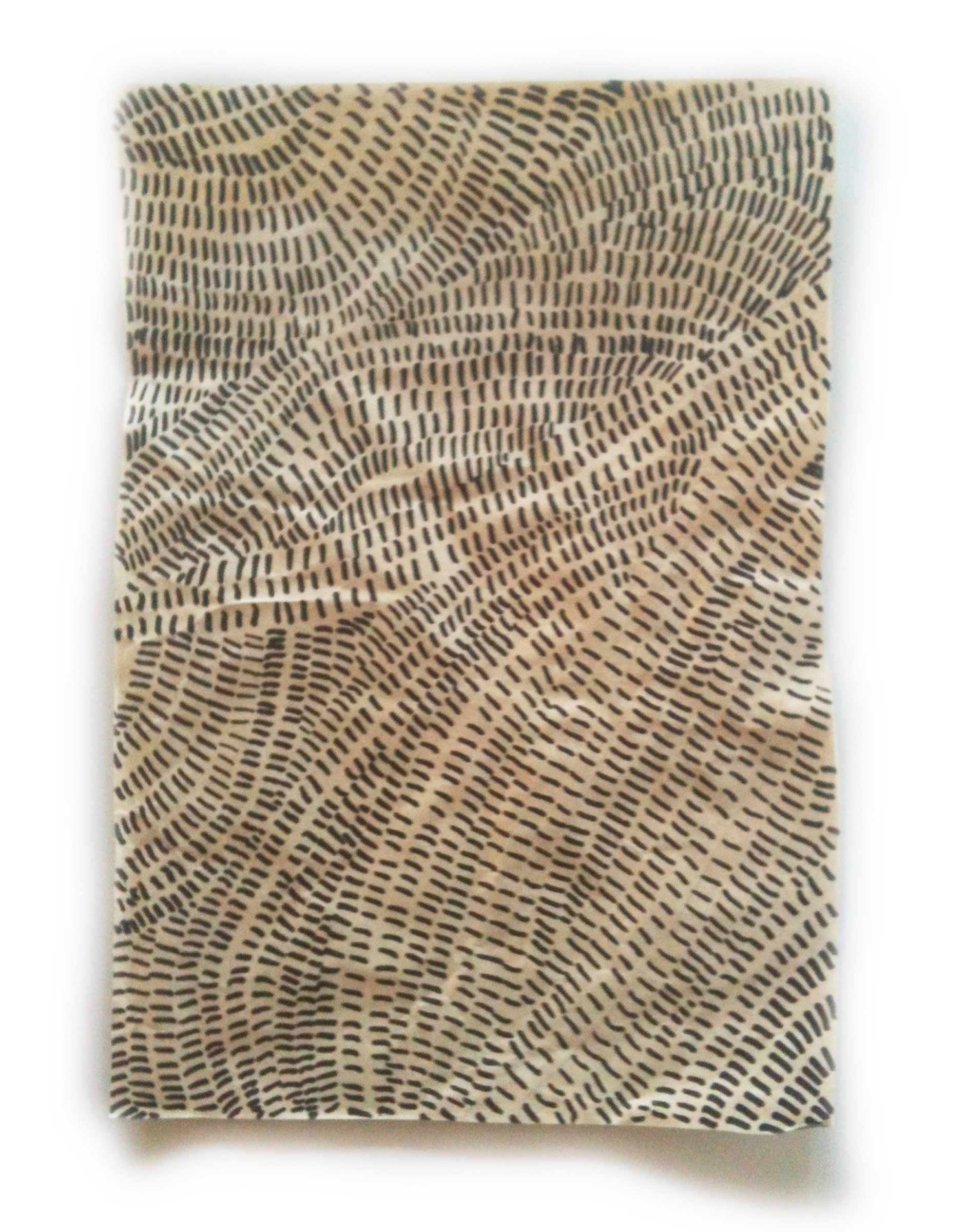Top Row: Months of stitching work from before the disaster.
Bottom Row Left: Traces of the stitch work after the disaster.
Bottom Row Right: My sister and talented photographer, Hannah Morgan, capturing the finished quilt for the exhibition catalogue.
Two days before the catalogue photoshoot, disaster struck.
The quilt shrunk. To half it’s size.
Felting is all about ‘shrinking’. As the rubbing and rolling (fulling) process tangles the wool fibres together and they form a dense fabric. The more rubbing and rolling (along with warm water and soap), the denser the fabric and the more shrinkage there is.
I’m sure everyone has had a warm-wash accident with a wooly jumper in the past. Wool is now often treated with chemicals to avoid shrinkage and is known as “superwash wool”. This is wool that is made by exposing the fibre to a chlorine gas that erodes the scales and then it is coated in a plastic called Hercosett 125. An article by Ashley from Woolful explains more about super wash and why we should think twice about having it near our skin. For felters, superwash fleece and yarn is best avoided as it is near impossible to felt.
The day of disaster.
The quilt hadn’t decreased in size as much as I’d hoped using just hand-felting techniques. And I thought it would be better if it was a little denser and heavier too. So I put it into the washing machine on very low heat. After three cycles, gradually raising the temperature, I wasn’t getting the results I wanted. So I cranked the heat up on the fourth cycle and happily went about some other chores.
The washing machine beeped to tell me the quilt was ready to come out. As I was extracting it I felt that it was very dense… a good thing! Then I started hanging it out and suddenly realised that the whole thing was much smaller than before. Much smaller. In addition, five months of stitching was virtually erased. Ugh.
It was not the time to panic. With two days to fix this, I had a chat to a friend, and decided that an additional piece could be made and attached to the quilt. Fortunately I had already started work on a second piece for the Wangaratta Contemporary Textile Award.
On reflection and a little bit of distance from the disaster, and a few chats with my friends and family, I’ve come to realise that the shrinking episode in the end enhanced the concept of fading memory. Only I know how much work is buried within the compressed fleece. Traces of past stitch lines are glimpsed under the surface. The additional panel shows the original qualities of the work, revealing a passage of time and it’s impact upon recollection.









